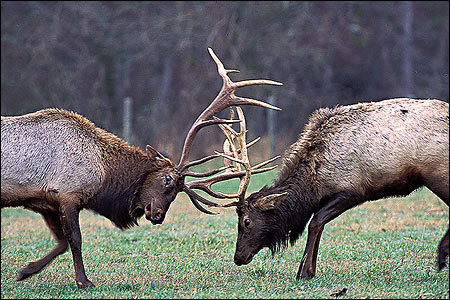As Told through the Jolin Globe
I promised to tell you stories about the river this year, and July 4 seems like a great time to tell another, because besides being America’s first national river, protected in 1972, the Buffalo is as red, white and blue a place as you can get. It passes at least two named Red Bluffs, ends at the White River and flows through numerous named Blue Holes. Add to that the bald eagles. We saw them every day of our recent float. And with numerous prehistoric and historic sites along the river listed on the National Register of Historic Places, the Buffalo preserves not just the river, but many American stories.
My journey this time included another challenge: Find the Benton bluffs — those river bluffs painted by Neosho-born artist Thomas Hart Benton, whose art today can be found from the Missouri Capitol in Jefferson City to the Metropolitan Museum of Art in New York City, from Crystal Bridges Museum of American Art in Bentonville, Arkansas, to the National Gallery of Art in Washington, D.C.
Benton spent a lifetime floating — and painting — Ozark rivers. He first visited the Buffalo in the 1920s, and returned many times over the next half-century. He also lent his name and talent to the fight to protect the river from dams in the 1960s.
‘Hog-tied’
At one point during the fight, Benton wrote directly to the U.S. Army Corps of Engineers: “As a lover of the great scenic beauty of the Buffalo River, I would like to add my name to those others which are lined up in protest against plans to put a dam across its waters. …
“Man, hog-tied as he largely is, with the steel tentacles of an increasingly mechanistic world and with the prospect of being tied ever tighter, needs some areas of escape, of escape to the natural world from which he came. He’ll need all the more of these in the future. The Buffalo River provides one of these areas. I say, and I intend it emphatically: Let the river be.”
Over the years, Benton painted numerous scenes along the Buffalo. Many are unidentifiable bluffs, but others are known.
Benton sketched a view from the Goat Trail on Big Bluff along the Upper Buffalo, but the upper river was already low when we arrived for our float, so we spent the next four days floating what turned out to be 49 miles down the middle river. That stretch was a Benton favorite.
“The most beautiful rivers for making drawings and paintings are these rather small ones, with their bluffs in Missouri and Northwest Arkansas, like the Buffalo, which is one of the most beautiful in the United States,” Benton has said.
‘Dramatic rocks’
The float began at Ozark, and not long after putting in we came upon Welch Bluff, distinguished by a visible geological fault in the face of the bluff, notes Ken Smith, author of “Buffalo River Handbook,” a guide to the river. It was Smith’s book that made it possible for me to pinpoint Welch and another of the river bluffs Benton painted.
Next up was Benton’s painting of the Narrows. The Buffalo eroded one side, and Richland Creek the other, leaving a rock wall that from either side looks like a bluff, but is actually stands up like the fin of a fish. Climb to the top of it and you can see over both the Buffalo and Richland Creek valleys.
Just downstream, Benton also captured Skull Bluff, also known as Bathouse Cave, with openings in the bluff that look like eye sockets.
“I particularly like this section of the Buffalo because these dramatic rocks are isolated. There are just as dramatic rocks in other places, but there are so many of them you can’t single it out. This one stands out like a monument,” Benton said of Skull Bluff.
It is the background for two of his paintings, one titled “Fishermen’s Camp,” painted in 1968, that recently sold at auction for $1.38 million; the other is “Fisherman’s Camp No. 2,” which is in the Whitney Museum of American Art in New York City. It is a slightly different camp scene.
Right after that is a bluff that, according to Smith, is called Benton Bluff, named for the artist, and it is another bluff he says is featured in a Benton painting, although I have been unable to match it up with any of the Benton paintings I have seen.
Our final Benton site on this float was Peter Cave Bluff, another easily recognizable landmark on the middle river just upstream from the Baker Ford access.
You can find Benton’s river paintings at many of the nation’s museums already mentioned. But go one better. Paddle the Buffalo yourself this year and see the real thing.









